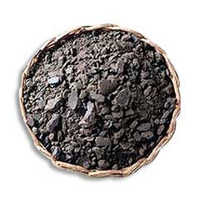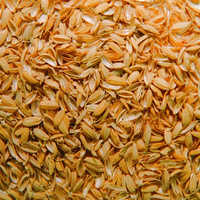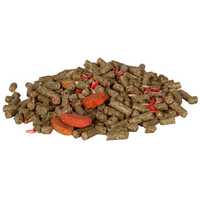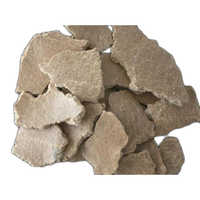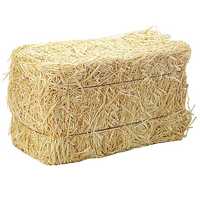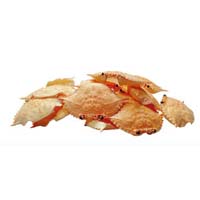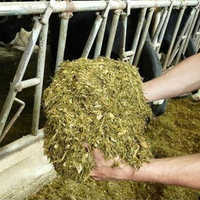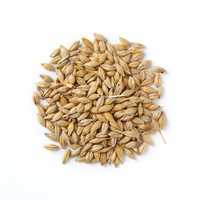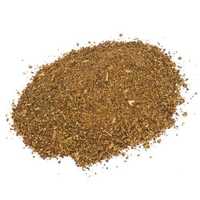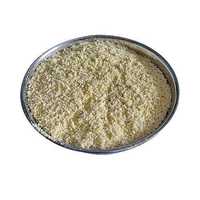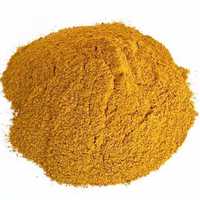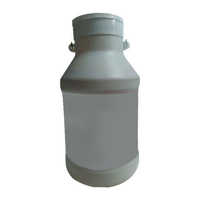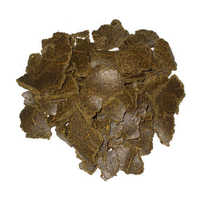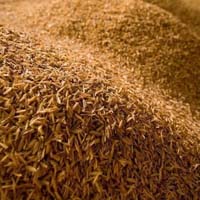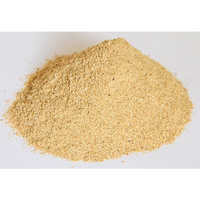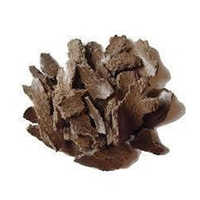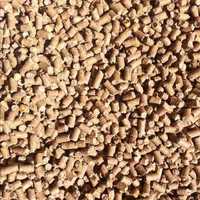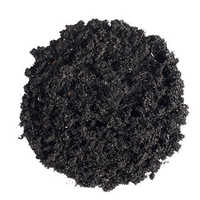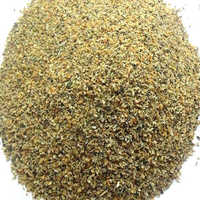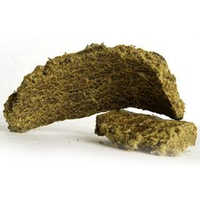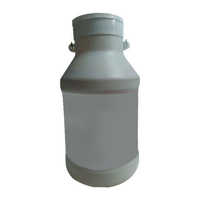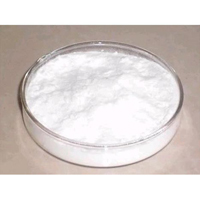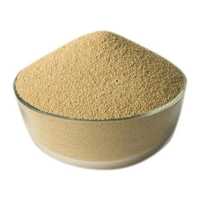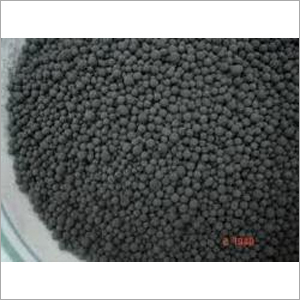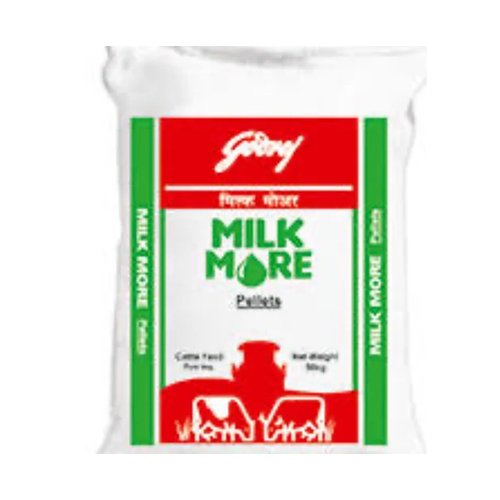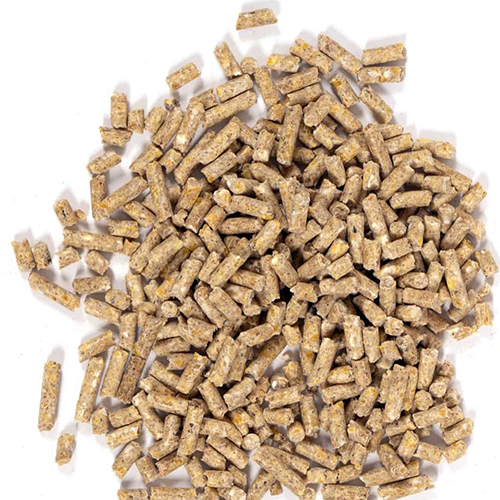Cattle Feed Supplements
(6424 products)
Top Cattle Feed Supplements Categories
Explore More Categories
Product Showcase
Rice Husk Powder Making Machine, Machine Type: Rice Huller
13 Years
Business Type: Manufacturer | Supplier
RISING INDUSTRIES
Made in India
Powder Safemix Forte 1Kg Pack Ingredients Minerals, Vitamins And Amino Acids
Type - Reduces deficiency of minerals
Main Ingredient - Mineral mixture
Variety - Nutrition feeds
16 Years
Business Type: Manufacturer | Distributor
SAFECON LIFE SCIENCES
Made in India
Pure Cotton Seed Cake
4 Years
Business Type: Exporter | Trading Company
FARMER EXIM
Cattle Feed Grade Natural Dried Brown Rice Husk
Type - Rice Husk
Texture - Dried
Grade - Cattle Feed
6 Years
Business Type: Manufacturer | Distributor
M/S BALAJI RICE MILL
Indian Inquiries Only
Made in India
Godrej Milk More Pellet Cattle Feed Grade: First Class
Price: 1570 INR (Approx.)/Pack
MOQ - 100 Pack/Packs
Physical Form - Powder
Grade - First Class
Function - Heathycare supplement
2 Years
Business Type: Manufacturer | Supplier
NEW KALINGA ENTERPRISES
Indian Inquiries Only
Veterinary Liver Tonic Ingredients: Chemicals
Price: 0.342 USD ($) (Approx.)/Piece
MOQ - 3000 Piece/Pieces
Medicine Type - Animal Health Supplements
Physical Form - Liquid
Ingredients - Chemicals
5 Years
Business Type: Manufacturer | Exporter
EPICON LIFESCIENCES LLP
Madhuvan Db 10000 Cattle Feed Pallet Efficacy: Promote Growth
Price: 1400 INR (Approx.)/Piece
MOQ - 500 Piece/Pieces
Type - Madhuvan DB 10000 Cattle Feed Pallet
Variety - Nutrition feeds
Grade - Food Grade
2 Years
Business Type: Manufacturer | Supplier
Namastubhyam Foods
Made in India
Feed Animal Cattle Feed Efficacy: Promote Healthy
MOQ - 100 Kilograms/Kilograms
Physical Form - Powder
Texture - Fresh
Grade - First Class
2 Years
Business Type: Manufacturer | Supplier
MAA SHAARDA ENTERPRISES
Made in India
Powder Salt Lick Almin Salt Tm
Price Trend: 450.00 - 4500.00 INR (Approx.)/Pack
MOQ - 100 Pack/Packs
Variety - Nutrition feeds
Physical Form - Powder
Texture - Other
12 Years
Business Type: Manufacturer
ANICARE
Indian Inquiries Only
Cattle Feed Pellets
4 Years
Business Type: Manufacturer | Distributor
KIM NGHIA CO,.LTD
Made in India
L Glutamine Powder Grade: Feed Grade
Price: 800 INR (Approx.)/Kilograms
MOQ - 300 Kilograms/Kilograms
Grade - Feed grade
Shelf Life - 2 Years
4 Years
Business Type: Manufacturer | Distributor
PROMOIS INTERNATIONAL LT
Made in India
Brown High-Protein Soyabean Meal
MOQ - 100 Kilograms/Kilograms
Color - Brown
Protein (%) - High
Moisture (%) - Nil
Business Type: Manufacturer | Exporter
SAHAJ EXPORTS
Verified Exporter
( Accepts only Foreign Inquiry)
Made in India
Acacia Nilotica Seeds
Price Trend: 6000.00 - 20000.00 (Approx.)/Metric Ton
MOQ - 100 Metric Ton
19 Years
Business Type: Manufacturer | Supplier
SHREEJI TRADING
Verified Exporter
( Accepts only Foreign Inquiry)
Made in India
Neem Cake
Business Type: Manufacturer
ATHARV CHEMICALS AND FERTILIZERS PRIVATE LIMITED
Made in India
Safflower Seeds
11 Years
Business Type: Manufacturer | Distributor
SHREE RAGHVENDRA AGRO PROCESSORS
Verified Exporter
( Accepts only Foreign Inquiry)
Made in India
Neem Cake
22 Years
Business Type: Manufacturer | Exporter
GREEN EARTH PRODUCTS PVT LTD.
Made in India
Fosfomycin Powder - Efficacy: Feed Preservatives
Price: 1000 INR (Approx.)/Kilograms
MOQ - 100 Kilograms/Kilograms
Physical Form - Powder
Texture - Fresh
Suitable For - Cattle
Business Type: Manufacturer | Supplier
TFF HOME AND FABRIC CARE CHEMICALS PRIVATE LIMITED
Ox Gallstones
9 Years
Business Type: Manufacturer | Distributor
ABBAY TRADING GROUP, CO LTD
Made in India
Guar Meal
11 Years
Business Type: Manufacturer | Distributor
VIJAYA ENTERPRISES
Made in India
Cattle Mineral Mixture
6 Years
Business Type: Manufacturer | Supplier
CENTRAL & WESTERN INDIA CHEMICALS
Indian Inquiries Only
Limestone 2-3mm (Whiteness 90-93%) For Animal Feed
Price Trend: 35.00 - 40.00 USD ($) (Approx.)/Ton
MOQ - 162 Ton/Tons
Type - calcium carbonate
Product Name - limestone
Appearance - granules
8 Years
Business Type: Manufacturer | Distributor
CHEM SOURCE EGYPT
Maduramycin Ammonium 1% Feed Grade - Color: Brown
Price: 100.00 INR (Approx.)/Kilograms
MOQ - 25 Kilograms/Kilograms
Shelf Life - 3 Years
Storage - Dry Place
Chemical Name - Maduramicin Ammonium 1% Feed Grade
15 Years
Business Type: Manufacturer | Distributor
JIGCHEM UNIVERSAL
Made in India
Rice Protein Powder Efficacy: Promote Healthy
Function - Heathycare supplement
Efficacy - Promote Healthy
Disease prevention - Joint Pain
4 Years
Business Type: Manufacturer | Exporter
AVA CHOLAYIL HEALTH CARE PRIVATE LIMITED
Verified Exporter
( Accepts only Foreign Inquiry)
Made in India
Monocalcium Phosphate Application: Fodders
Type - Monocalcium Phosphate
Variety - Nutrition feeds
Physical Form - Powder
12 Years
Business Type: Manufacturer
RAJVI ENTERPRISE
De Oiled Castor Cake
Price Trend: 4500.00 - 8500.00 INR (Approx.)/Metric Ton
MOQ - 10 Metric Ton/Metric Tons
10 Years
Business Type: Manufacturer | Distributor
SHIVAM CASTOR PRODUCTS PVT. LTD.
Made in India
Sarson Khal
Price Trend: 32-3500 INR (Approx.)/Ton
MOQ - 10 Ton/Tons
4 Years
Business Type: Manufacturer
SHREE R R AGRO INDUSTRIES
Indian Inquiries Only
Made in India
1 KG Tool To Control Pathogens
5 Years
Business Type: Manufacturer
VETCO INDIA
Veterinary Calcium Application: Water
Price Trend: 250.00 - 700.00 INR (Approx.)/Bottle
MOQ - 3 Bottle/Bottles
Type - Veterinary
Main Ingredient - Calcium
Variety - Nutrition feeds
10 Years
Response Rate: 86.79%
Business Type: Manufacturer | Distributor
OCTA LIFE SCIENCES
Indian Inquiries Only
Cattle Feed Supplements Manufacturers | Suppliers in India
| Company Name | Location | Member Since |
|---|---|---|
| Green Earth Products Pvt Ltd. | New Delhi, India | 22 Years |
| Shreeji Trading | Dahod, India | 19 Years |
| Safecon Life Sciences | Rudrapur, India | 16 Years |
| Jigchem Universal | Mumbai, India | 15 Years |
| Rising Industries | Kolkata, India | 13 Years |
| Anicare | Chennai, India | 12 Years |
| Rajvi Enterprise | Ahmedabad, India | 12 Years |
| Shree Raghvendra Agro Processors | Dahod, India | 11 Years |
| Vijaya Enterprises | Mumbai, India | 11 Years |
| Shivam Castor Products Pvt. Ltd. | Ahmedabad, India | 10 Years |
Cattle Supplements: Understanding The Importance
Why Should We Use Cattle Supplements?
The Milk Unions and Federations' feed for cattle is a well-rounded mix of all the nutrients a cow needs for health, development, and milk output. High-quality grains, oil cakes/meals, brans, molasses, salt, minerals, and vitamins are used in its production. In addition to being inexpensive and tasty, it also helps keep costs down.
- Cattle feed provides essential nutrients for healthy development, maintenance, and milk production. Pregnant calves benefit from receiving a higher feed intake, as this promotes healthy fetal growth.
- Milk production, fat content, and reproductive success are all boosted.
- The daily ration for growing animals should consist of 1 to 1.5 kg of compound cattle feed.
- Compound cattle feed in the amount of 2 kilograms per day is recommended for the general well-being of milking animals, with an extra 400 grams given to cows and 500 grams given to buffaloes for each liter of milk that is harvested.
- Pregnant animals should get this amount, plus 1 kilogram of compound cattle feed and 1 kg of excellent quality oil cake, in the final two months of pregnancy.
- Formation of new ligaments and tendons
- participating in the generation of energy
- Benefits to human health from lower cholesterol levels
- Linked to the creation of red blood cells
Types & Nutrition Value of Cattle Feed Supplements
Benefits Of Cattle Feed Supplements
Studies have shown the reverse, he said. Cows who lost weight in the last trimester had smaller calves and more calving issues. Body condition impacts fertility, rebreeding, and pregnancy, which affect herd profitability.
FAQs: Cattle Supplements
- Calcium.
- Phosphorous.
- Magnesium.
- Selenium.
- Vitamin A.
- Vitamin D.
- Vitamin E.
Related Categories
Agricultural Machines & Tools
Agriculture & By-product Agents
Agriculture Product Stocks
Agro Chemicals
Agro Products & Commodities
Animal Casings
Animal Extract
Animal Fodders
Animal Husbandry
Animal Products
Aquaculture Equipment & Supplies
Aquatic Products
Bactericides
Bamboo & Rattan Products
Beans
Cashews
Cattle Feed Supplements
Cereals
Coconut
Coconut Shell Products
Coffee
Coir Blocks
Coir Fiber
Coir Products
Coir Rope
Dehydrated Vegetables
Dried Vegetables
EMU & EMU Products
EMU Eggs
EMU Meat
EMU Oil Products
Eggs
Farm Machinery
Farm Machinery Parts
Fertilizers
Fodder & Feed Additives
Fresh Fruits
Fresh Vegetables
Frozen & Dried Fruit
Frozen Vegetables
Fungicides
Garden Accessories
Grain
Greenhouse Supplies & Equipment
Guar Gum
Herbicides
Horticulture & Gardening Tools
Horticulture, Gardening & Irrigation Machinery
Insecticides
Irrigation Systems
Jute Products
Livestock
Molasses
Mushroom & Truffle
Nematicides
Nuts & Kernels
Oil Seed Extraction Machinery
Organic Vegetables
Pesticides
Plant & Animal Oil
Plant Extract
Plant Growth Regulator
Plant Seeds
Plant, Flowers & Dried Flowers
Potpourri
Poultry Equipment
Poultry Feed Supplements
Pulses
Raw Cotton & Cotton Waste
Rice
Seed Processing Machinery
Seeds
Shade Net
Soil Conditioners
Storage Silos
Tea
Tractor Parts
Tractors
Wheat
